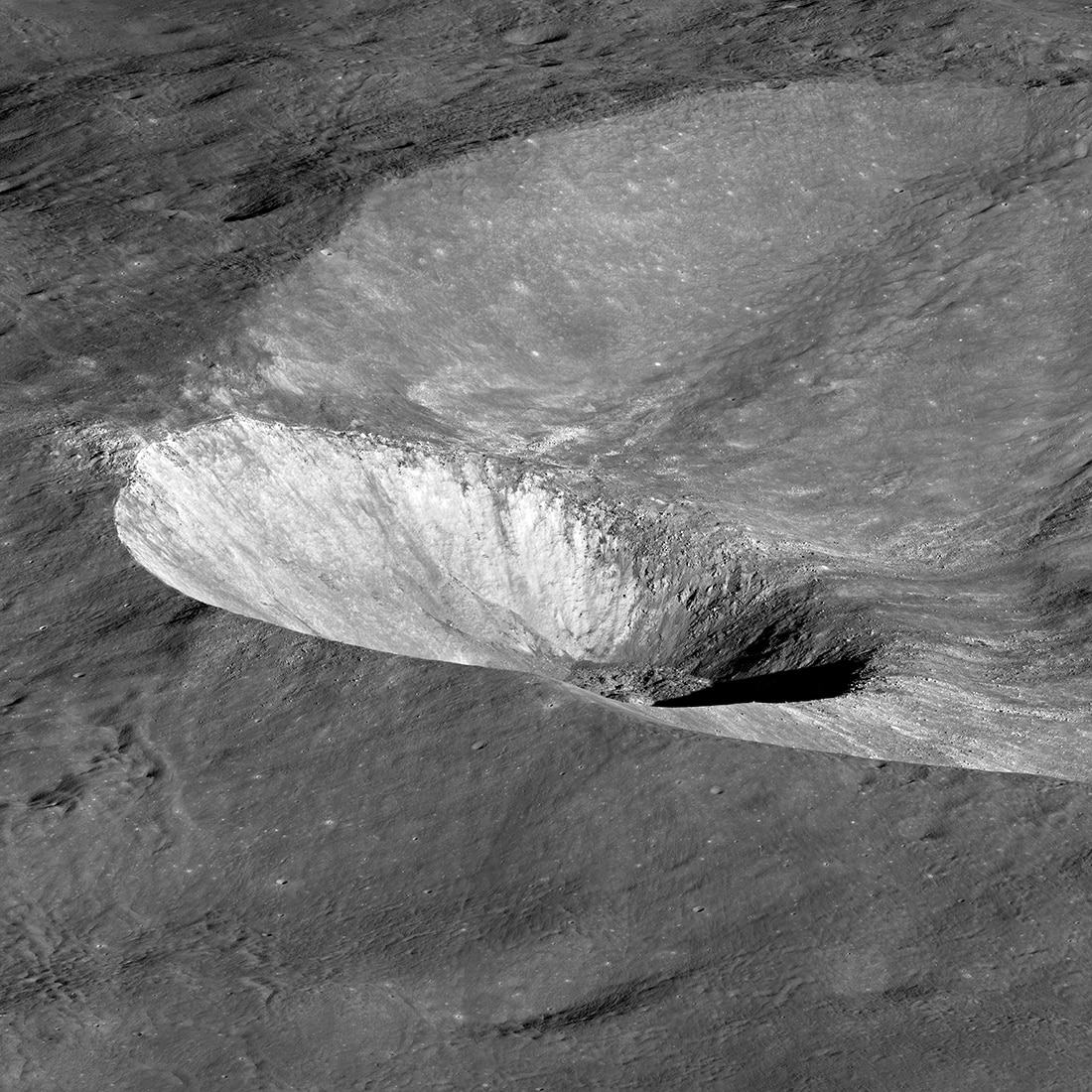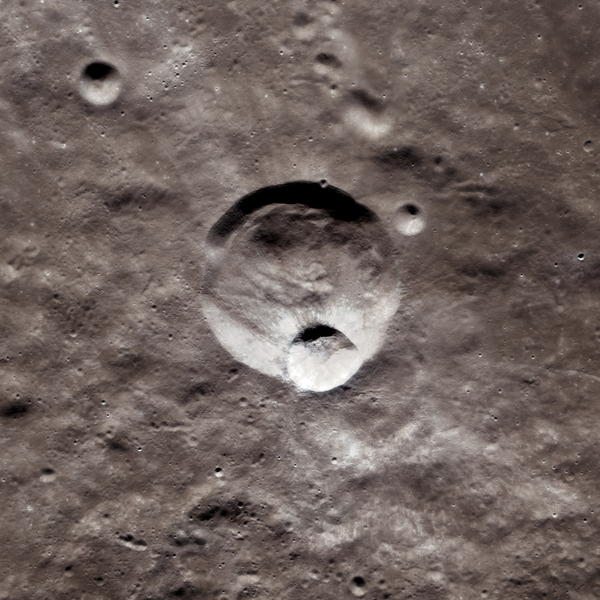Create a free profile to get unlimited access to exclusive videos, sweepstakes, and more!
Yo dawg, I heard you like craters, so I found a crater in a crater

One thing I like to mention when I talk about asteroid impacts is that if you wait long enough and do nothing, they’re gonna happen.
To illustrate that I point to the Moon. With no atmosphere to stop even the smallest bits of interplanetary debris, and no active weather system to erode them*, we have a decent record of lunar impacts going back a few billion years.
Because of that, in many places the lunar surface is saturated with craters, meaning a subsequent impact would probably erase more craters than it creates. What this means in turn is that you’re bound to find craters on top of other craters, when an asteroid or comet slams into a pre-existing crater. And when you do, you find the older crater affects the way the newer one looks just as the newer one modifies the older one.
As an exemplar take a look at Hawke, a 13-kilometer wide crater just inside the rim of the 37-km-wide Grotrian crater on the Moon’s far side:
Cooooool. This wide-angle image from the Lunar Reconnaissance Orbiter is a more-or-less “natural” color image (a combination of red, green, and blue images). The two craters are pretty obvious. You can see streaks, called rays, both above (to the north) of Grotrian and to the lower right; those are essentially splash marks from debris thrown out when Hawke formed (and by the by, we now know what causes rays to form). I suspect the debris thrown north from Hawke had a freer path as it sailed over the floor of Grotrian than debris thrown in other directions, allowing more obvious rays in that direction. The same goes for stuff thrown south, since the rim of the smaller crater sits adjacent to that of the bigger one (a mathematician might say they are osculating, which means “kissing”), though the rolling terrain to the south makes that harder to see.
Note that the south rim of Grotrian appears to have slumped inward, possibly due to the second impact. There’s slumping on the north rim too — you can see hummocky stuff on the floor there — but the rim wall there looks steeper for some reason, so maybe slumping is easy there anyway.
Hawke is weird-looking, off center. That’s because it hit on the bigger crater’s wall, which distorts the shape of the bowl. That’s a lot more obvious in an oblique view:
Yeah. From this angle, the smaller crater’s low point is offset to the right, and you can see material has collected there, no doubt debris that’s collapsed inward from the rim. You can see short rays extending from it to the right, too.
I found this crater on the wonderful Lunar Reconnaissance Orbiter Camera blog, which has more detail on the craters, including a bit about lunar scientist B. Ray Hawke, after whom the crater is named. As always I urge you to go there and read it; I love that site.
And while there, I learned a thing! Even better, it’s not just a thing but a new word to me, too: cryptomare.
First, it’s just a cool word. But also it describes an interesting feature. Maria (pronounced “MAR-ee-ya”; singular “MAR-ay”) are relatively flat, dark plains on the Moon, created by deep impacts and subsequent flooding by basaltic lava — those are the dark features you can see by eye when you look at the Moon. Cryptomaria form when a mare gets buried by lighter debris from later impacts. They can be hard to find, since they’re buried, but radar mapping can reveal them.
I was unaware of these features, so I’m doubly glad I found the double-crater article. I love learning new things, especially about our nearest neighbor in space.
[P.S. If you’re wondering about the title of this post, it’s from a meme that’s been around a while but still cracks me up.]
* There is very slow erosion and discoloration due to the solar wind and the subsequent impact of micrometeorites; one way to tell if a crater is really old is if it has a softer rim and no bright material in or around it.




























